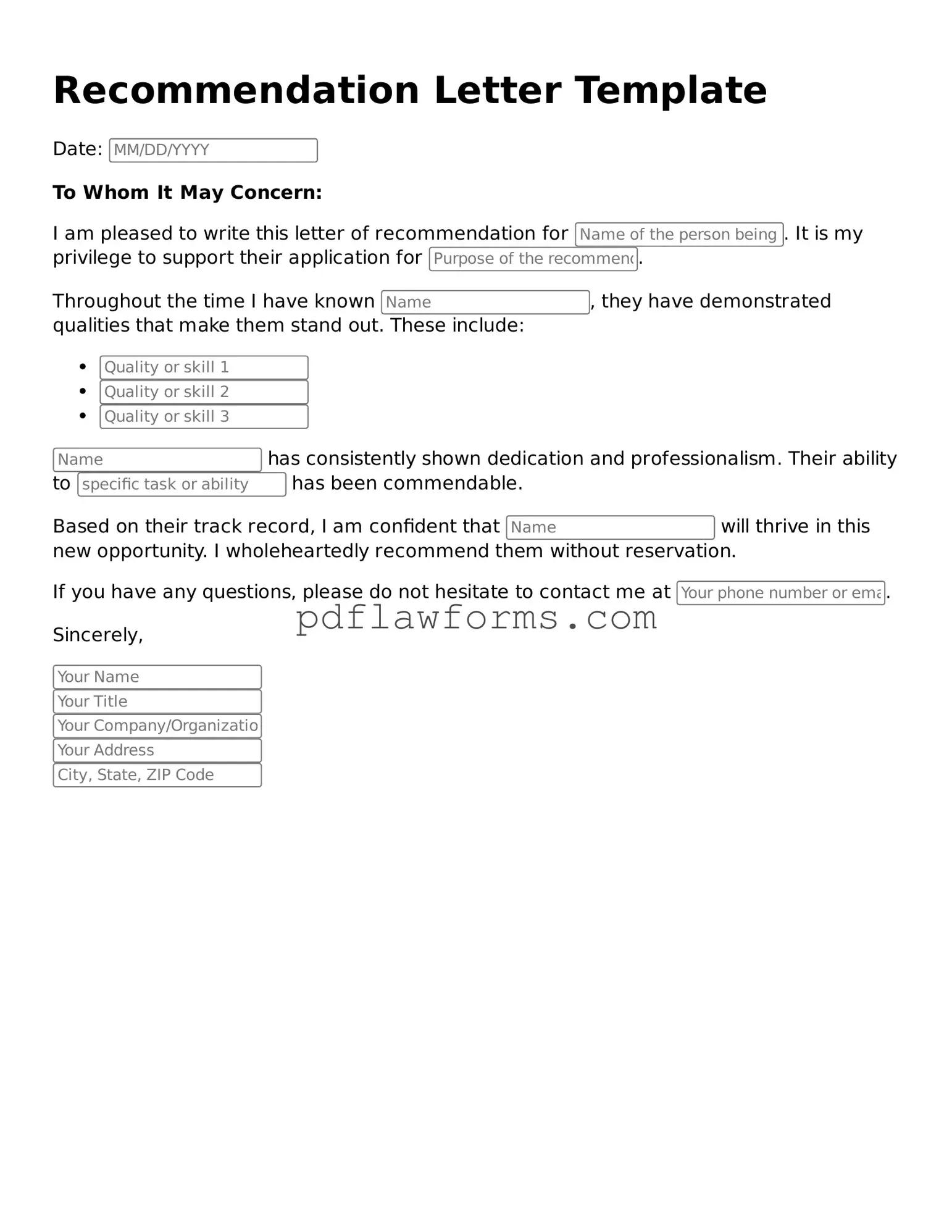When seeking opportunities for advancement in education or employment, a recommendation letter can play a pivotal role in highlighting an individual's strengths and qualifications. This form serves as a structured guide for the person writing the letter, ensuring that essential information is included to provide a comprehensive overview of the candidate's abilities. Typically, the form prompts the recommender to detail their relationship with the candidate, the specific skills and achievements that set them apart, and any notable contributions they have made in previous roles or academic settings. Additionally, it often includes sections for the recommender to assess the candidate’s character and potential for future success. By following this format, the recommender can create a compelling narrative that supports the candidate’s application, making it easier for decision-makers to understand why the individual deserves consideration. Ultimately, a well-crafted recommendation letter can significantly impact a candidate's chances of success, underscoring the importance of this form in the application process.
